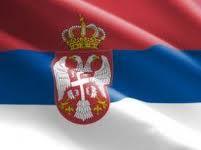The name Yugoslavia previously designated six republics (Serbia, Montenegro, Macedonia, Bosnia-Herzogovia, Croatia, and Slovenia), but now includes just Serbia and Montenegro. The word means "land of the southern Slavs." Montenegro, which means "black mountain," takes its name from its rugged terrain. Within Serbia there are several national cultures. In addition to the dominant Serb tradition, there is a large Hungarian population in the northern province of Vojvodina, where Hungarian is the common language and the culture is highly influenced by Hungary (which borders the province to the north). In southern Serbia, the province of Kosovo is primarily Albanian, and has an Islamic culture that bears many remnants of the earlier Turkish conquest.
Serbia is a landlocked territory in the Balkan Peninsula of Eastern Europe, bordering Montenegro, Bosnia-Herzegovina, Croatia, Hungary, Romania, Bulgaria, Macedonia, and Albania. Montenegro is to the west of Serbia, also bordering Bosnia and Herzogovina, Albania, and the Adriatic Sea. Serbia covers 34,136 square miles (88,412 square kilometers); Montenegro has an area of 5,299 square miles (13,724 square kilometers). Together they are slightly smaller than the state of Kentucky. The terrain varies widely. In the north there are fertile plains that produce most of Serbia's crops, as well as marshlands along the Sava and Danube Rivers. At the northern border, the Danube River runs along the Iron Gate Gorge. Central Serbia is hilly and forested and is the most densely populated region of the country. In the east, there are the Carpathian and Rhodope Mountains, as well as the Balkan range, which forms the border with Romania. The Dinaric Alps rise in the western central region. Kosovo, in the south, is considered the cradle of Serbian civilization. Its geographical formation is two basins surrounded by mountains, including the highest peak in Yugoslavia, Daravica, with an elevation of 8,714 feet (2,656 meters). Kosovo's rocky soil does not produce much, with the exception of corn and rye, but there are grazing fields for livestock, as well as mineral resources of lead, zinc, and silver. Montenegro, the smallest of the former Yugoslav republics, is largely forested. Its terrain is rough and mountainous, better suited for animal husbandry than for farming. Its coastal plain along the Adriatic is narrow, dropping off to sheer cliffs in the north.
Belgrade is the capital of Serbia and is the largest city in the country, with a population of 1.5 million. It takes its name, which translates as "white fortress," from the large stone walls that enclose the old part of the city. It is in the north of the country, on a cliff overlooking the meeting of the Danube and Sava Rivers.
Since the civil wars began in the early 1990s, the population has become more heavily Serbian. Many Croats have fled, particularly from Belgrade and Vojvodina, and many ethnic Serbs have fled from other former Yugoslav republics, Bosnia and Croatia in particular. The 2000 estimate for Serbia's population was 9,981,929, and for Montenegro 680,158. However, these numbers are uncertain due to forced dislocation and ethnic cleansing. Serbs constitute 62.6 percent of people in the area; 16.5 percent are Albanian; 5 percent Montenegrin; 3.4 percent Yugoslav; and 3.3 percent Hungarian. The remaining 9.2 percent are composed of other minorities, including Croats, Gypsies, and Magyars.


